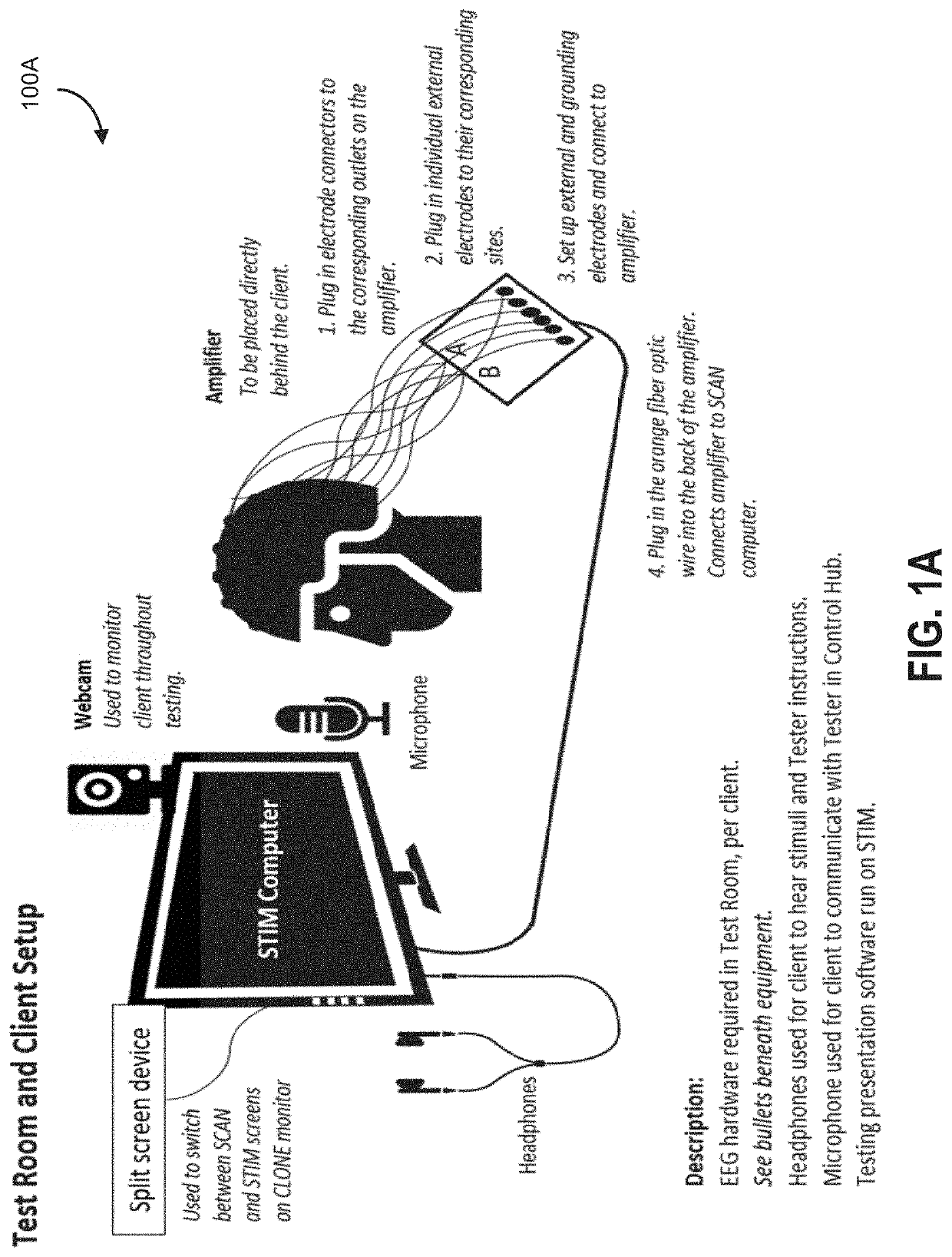Systems and methods for cognitive health assessment
a cognitive health and system technology, applied in the field of cognitive health assessment systems and methods, can solve problems such as inability to provide meaningful responses to stimuli, difficult cognitive health assessments, and increased challenges in relation
- Summary
- Abstract
- Description
- Claims
- Application Information
AI Technical Summary
Benefits of technology
Problems solved by technology
Method used
Image
Examples
concussion example 1
[0099]Patient “A” scored highest on the behavioural assessment portion of the applicant's study comparing the largest dataset of living ex-pro football players to healthy controls to date that leveraged EEG to measure brain function. The study compared behavioural and neuropsychological assessment, to functional MRI and the EEG protocol of the cognitive health assessment. When Patient “A” scored the highest on the behavioural assessment, traditionally this would indicate he ranked as the “most damaged / injured” as a result of physical impact he incurred throughout his professional football career, indicating long-term cognitive damage.
[0100]However, the cognitive health assessment (which recorded his brain function as it pertained to: Auditory Processing (N1 / P2), Visual Processing (N1 / P2), Information Processing (all ERPs), Automatic Attention (MMN), Reactive Attention (P3a), Concentration (P3b), and Working Memory (P3b) in this case), provided objective data that proved Patient “A” ...
concussion example 2
[0104]Patient “B” was struck by a car as a pedestrian. They lost consciousness at the scene and were diagnosed with a “moderate-to-severe” concussion at the hospital the next day as a result of their physical and behavioral examination. They went on to have two CT scans, an optometrist exam and a psychological assessment.
[0105]The CT scans both turned up negative and the optometrist exam was clear (indicating no concussion by the hospital's standard protocol, meaning the initial diagnosis was unclear.) The psychological assessment uncovered a history of mood disorder. Due to Patient “B”'s history of mood disorders, many of their symptoms the patient associated with the concussion incident were attributed to the pre-existing mood conditions.
[0106]This led to Patient “B” being treated with pharmaceutical intervention and counselling being prescribed as their treatment strategy. Patient “B”'s symptoms worsened, compounding pre-existing anxiety and depression. Patient “B” could not retu...
concussion example 3
[0113]Patient “C” is a unique case who was a part of the applicants' study on ex-pro football players as a healthy control. Patient “C” later was a party to a motor vehicle accident that lead to a diagnosis of a mild concussion. The diagnosis was given following a physical and behavioural examination at hospital.
[0114]A CT scan was run, and the results were negative. Patient “C” was monitored throughout the first four weeks of their concussion, but symptoms (including headache, dizziness, cognitive and physical fatigue, and tinnitus) persisted. After months of symptoms not resolving, Patient “C” sought out a cognitive health assessment. Patient “C” was tested for Auditory Processing (N1 / P2), Visual Processing (N1 / P2), Information Processing (all ERPs), Language Comprehension (N400), Automatic Attention (MMN), Reactive Attention (P3a), Concentration (P3b), Working Memory (P3b) and Executive Function (N2b / P3b). “Moderate deficiency” was identified for Automatic Attention, Reactive Att...
PUM
 Login to View More
Login to View More Abstract
Description
Claims
Application Information
 Login to View More
Login to View More - R&D
- Intellectual Property
- Life Sciences
- Materials
- Tech Scout
- Unparalleled Data Quality
- Higher Quality Content
- 60% Fewer Hallucinations
Browse by: Latest US Patents, China's latest patents, Technical Efficacy Thesaurus, Application Domain, Technology Topic, Popular Technical Reports.
© 2025 PatSnap. All rights reserved.Legal|Privacy policy|Modern Slavery Act Transparency Statement|Sitemap|About US| Contact US: help@patsnap.com



